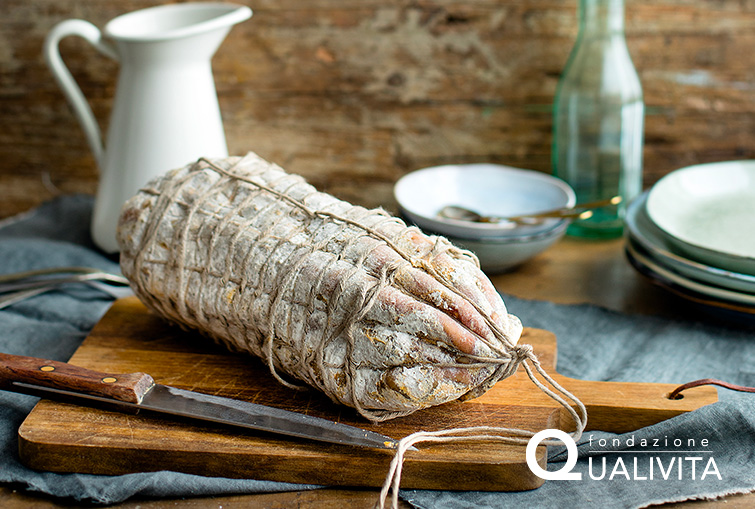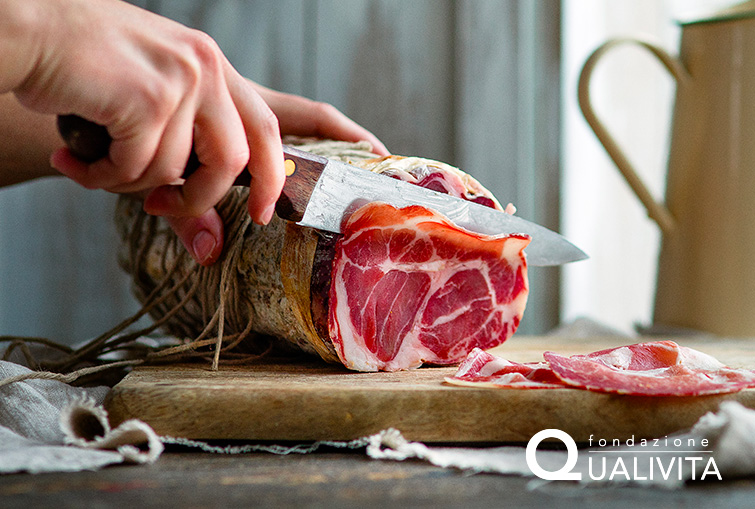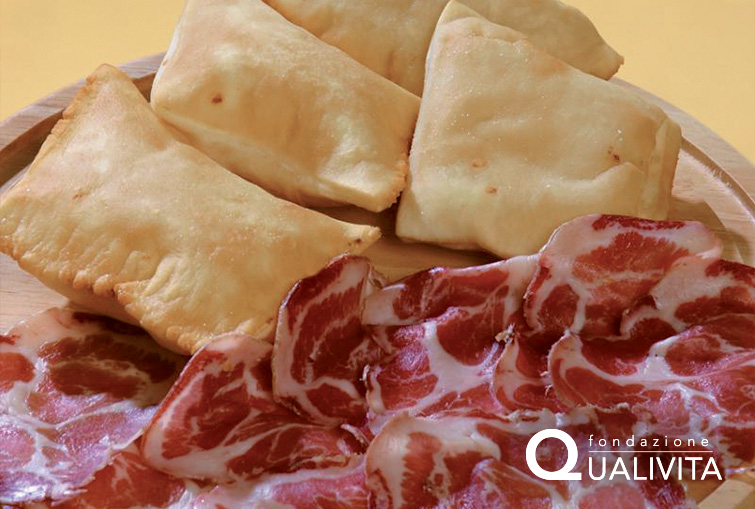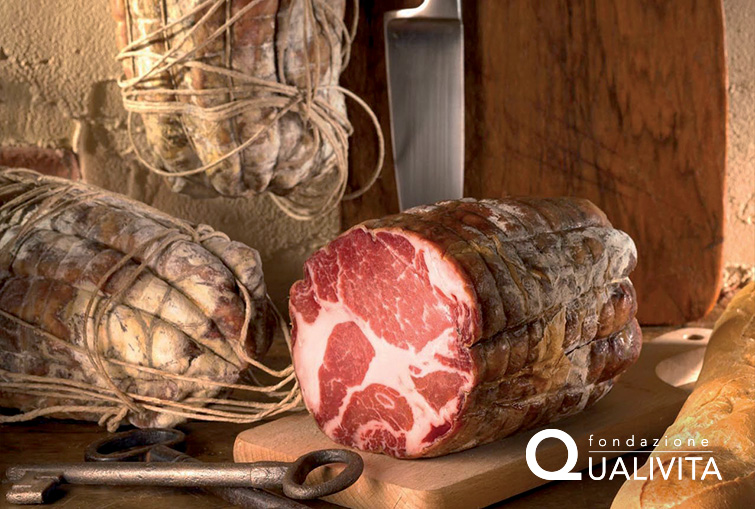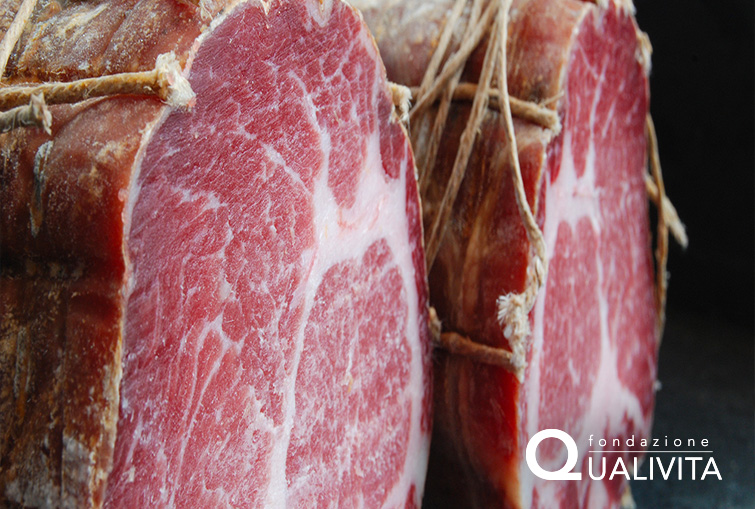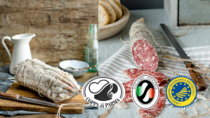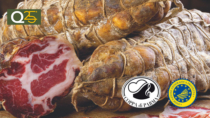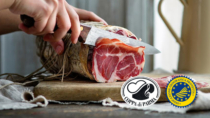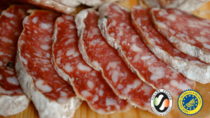Description
Coppa di Parma PGI is a charcuterie product obtained from the muscular part of the neck of pigs belonging to the traditional Large White, Landrace and Duroc breeds, purebred or offspring, or other breeds considered compatible with the Italian heavy pig.
Production Area
The production area of Coppa di Parma PGI is within the entire provinces of Parma, Modena, Reggio Emilia, Mantua and Pavia, as well as in the municipalities along the River Po belonging to the administrative territory of the provinces of Lodi and Cremona, and the municipality of San Colombano al Lambro in the Province of Milan, in the regions of Emilia-Romagna and Lombardy.
Production Method
The muscular parts are carefully cleaned, divided and trimmed. The meat is then salted, either by hand or mechanically, by churning it with a mix of salt, fresh herbs, pepper and/or other spices that can also be added in stages during the period the product is left in refrigerated rooms (6-10 days). After a further resting period of at least five days, it is stuffed into casings. Natural casings are used for products destined to be sold whole or in pieces; those destined for slicing are stuffed in natural casings that have been assembled with a series of anatomical pieces. Once stuffed, it is tied with twine to form a mesh. Steaming and drying takes place on the same premises, but for different lengths of time. Curing takes place at a temperature of 12-16°C and with a relative humidity of 70-87%. The minimum duration of the process is 60 days from the start of processing for products weighing between 2 and 2.6 kg, and 90 days for those weighing over 2.6 kg.
Appearance and Flavour
Coppa di Parma PGI is cylindrical in shape, with a length varying from 25 to 40 cm and a minimum weight of 1.3 kg. On cutting, the slice is fairly firm and not greasy. The lean parts are red and the fatty parts are pinkish. It has a delicate flavour and pleasant sapidity.
History
There are numerous citations and references to the consumption of Coppa di Parma, starting as early as the 17th century. For example, there are documents in which the product is called "bondiola" or "salame investito", that is, sausage. In the memoirs of some eighteenth-century travellers, it is mentioned as a being one of Parma’s typical gastronomic products. In an inventory from 1723, it says that in order to become a member of the guild of Lardaroli, it is necessary to possess a certain number of salami and bondiole. From the same period, there are contracts for the administering of food in the Royal Kitchens, in which the request for bondiole appears often, as it was particularly appreciated by the court of Duke Ferdinand I. There are also documents dating back to 1800, showing an increase in the sale of Coppa di Parma in the local markets.
Gastronomy
Coppa di Parma PGI should be kept in a cool damp place, such as a cellar. Once opened it should be wrapped in a cotton cloth soaked in Colli di Parma DOP Malvasia and kept in the refrigerator. It is served as a starter or main course, with bread or hot crostini and vegetable pate. The characteristic soft slices make this product ideal as an ingredient in savoury flans or stuffed pizza.
Marketing
The product is marketed as Coppa di Parma PGI. It is sold whole, loose, or in pieces or slices, vacuum-packed or in modified atmosphere packaging.
Distinctive Features
Thanks to the short curing process, Coppa di Parma PGI is characterised by its tenderness and mild sapidity, which allows for the full pork flavour to stand out.




